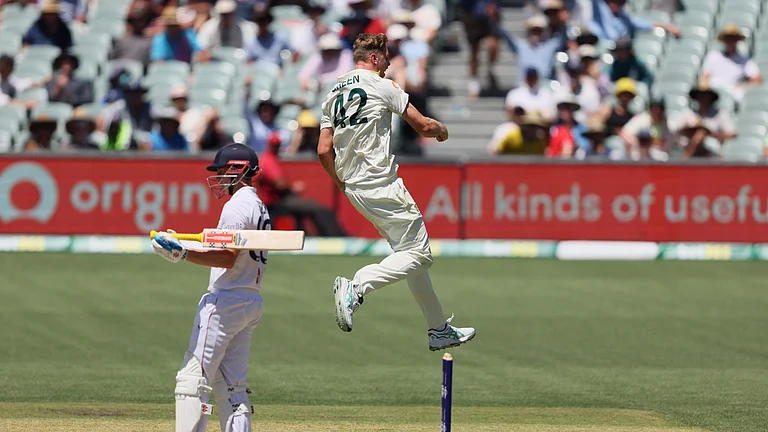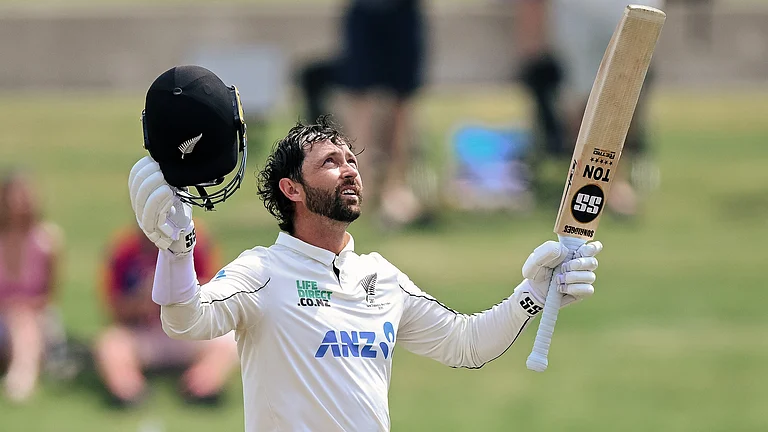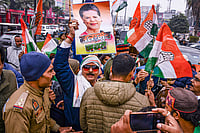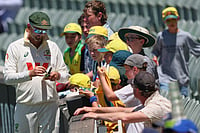As the mountaineer Anurag Maloo battles for his health in New Delhi’s AIIMS after falling in a crevasse on Mount Annapurna, and as an aerial rescue team flies out to Mount Everest to locate the missing Indian-origin climber Shrinivas Sainis Dattatraya, their families face a daunting climb of their own. Ashish Maloo, Anurag’s younger brother, for one, is spending his days juggling hospital duties with other responsibilities.
“Anurag is gradually improving. It is going to be a long haul till he recovers,” Ashish says in a WhatsApp message. “The family is obviously concerned about his condition and recovery, but at the same time hopeful, having faith and belief in the Almighty.”
Further north in Uttarakhand, mountaineering Yoda Umesh Zirpe is at the famous Gangotri Temple, almost at the foot of the Himalayas. He is the president of the Akhil Maharashtra Giryarohan Mahasangh (AMGM), the apex body for mountaineering in the state, and a climber with 45 years experience. Currently, Zirpe and his nine-member team are on a 40-day expedition to Mount Meru. In the past, he has ascended all nine 8000m-plus peaks open to Indians, including Everest.
As the Ganga sloshes past the temple, Zirpe ponders a couple of questions put to him. How can mountaineering tragedies be reduced if not completely avoided? Were climbers like Maloo and Baljeet Kaur, both rescued from the Annapurna and climbing without supplemental oxygen, pushing their luck?
“Mountaineering is booming, but whenever a sector grows, some wrong things creep in due to various reasons,” Zirpe says. “For example, people are obsessed with 8000m peaks without necessarily having the experience or preparation to attempt them. It’s become a bazaar. They need to ask themselves, ‘Am I prepared enough? Am I experienced enough?’”
While some think a successful climb is one where the climber summits, Zirpe has a different point of view.
“Returning safely is more important,” he says. “What's the point of summiting if you don't make it back safely? There is also a rise in the number of solo climbers. But I see mountaineering as a team effort.”
Zirpe says climbers these days seem in a hurry to climb one mountain after another. Kaur climbed four 8000m peaks in about a month last May. Maloo, who reportedly was climbing his first 8000m peak, was on a mission to climb all 14 peaks above 8,000 metres to create awareness about UN Global Goals. Though his intentions were noble, the goal was too ambitious.
“In reality, there is no need for any kind of a race in mountaineering. Unlike in running, you are not competing against anyone; you should focus on enjoying the journey,” Zirpe says.
When Ashish Maloo is asked whether it was too early in his brother’s climbing career to approach Annapurna without supplemental oxygen, he says, “Only Anurag can answer that.”
From Delhi and Gangotri, we take our questions to Mumbai. Kuntal Joisher is not your typical Gujarati from Ghatkopar. The teeming suburb on Mumbai’s eastern side is known for its garish street food and indulgence. Joisher, though, is a picture of physical rigour and asceticism. He is vegan, boot camp fit and has a ripped body to show for it.
Joisher was caught smack in the path of an avalanche on Everest Base Camp during the 2015 Nepal Earthquake. He is a conqueror of many famous peaks including Everest. He knows top-level mountaineering is serious business. Understandably, he has strong opinions about dilettantes who want to become Everest heroes without putting in the years.
“In the last four or five years, my DMs are filled with one single question: ‘how can I climb Everest?’,” Joisher says. “As soon as I dive a little into the backgrounds of the people who ask this question, it emerges that Everest is literally the first mountain they are trying to climb. They have not climbed 100 metres in their neighbourhood, and they want to climb Mount Everest. Before my first 8000-er, which was Manaslu in 2014, I climbed 12 to 14 6000m peaks.”
Annapurna, the scene of the recent mayhem, is deemed by many as the world’s most dangerous mountain. It is prone to avalanches, for one. Joisher says that one in four climbers die on Annapurna, and to go on it without supplemental oxygen “is overconfidence and beyond reckless.”
“If you get into trouble, you stress the entire infrastructure, put many Sherpa lives at risk, put the helicopter guy's life at risk, put so many lives at risk. For what? For a stupid no-oxygen record,” Joisher says, his decibel level rising. “I can understand if you face a situation due to an avalanche or a natural disaster. But not if it’s because of your recklessness.”
Social media has fanned human vanity and made things worse. Much of social media stardom is shallow and short-lived. No one remembers what we liked or shared two days ago. Yet it exerts a strong pull on people. And there is no doubt that in some cases it leads to money.
“In this age of social media, fame is definitely playing into people's decision making. And I am not saying fame is bad,” Joisher says. “The more followers I have, the more collaborations I will have, the more companies will sponsor my expeditions, the more money I will make. Personally, being known allows me to speak about issues that I am passionate about, like veganism, dementia awareness, inspiring people to pursue their dreams. So it's important, but not so important as to risk my fingers, toes or life, or risk someone else's life.”
Climate change too has had an impact on the stability of the mountains, and increased the risk off mountaineering.
Says Zirpe, “Ten years ago, it was fairly certain that a particular period in the calendar would have good weather. Now, that certainty no longer exists.”
This year, the snow that normally falls on the Himalayas from December to February started in March and is continuing even now.
But climbers continue to flock the prestige peaks, especially Everest. And the Nepal government is happy to oblige, as each Everest permit brings them $11,000 (Rs 9,06,000 approx). With overhead costs such as medical insurance and Sherpa fees thrown in, a single Everest attempt costs in the range of Rs 30 lakh. In the 1970s, 20 permits were issued to climbers. This season some 475 permits have been given despite the frequently raised issue of overcrowding on Everest.
What further annoys Joisher is the lack of restraint shown by mountaineering businessmen. One company, he says, is offering lavish Base Camp tents with a DVD room and 56-inch TV. There is absolutely no reason for it, according to him.
“Imagine the carbon footprint of something like this. You'd be running a diesel generator 24 x 7,” Joisher says.
No wonder every once in a while the mountains rumble and wreak havoc, reminding us that poking the bear will have its consequences.

























